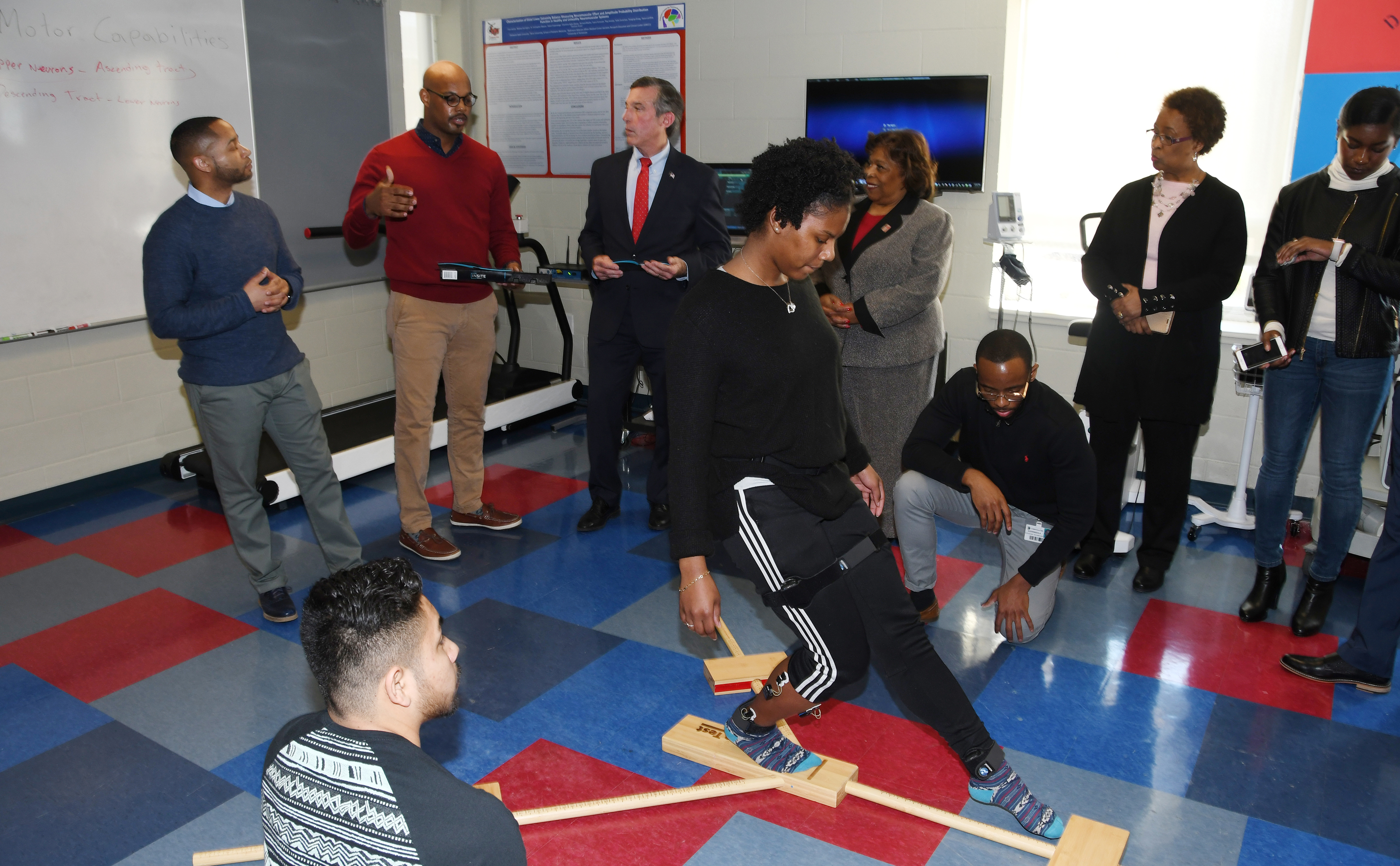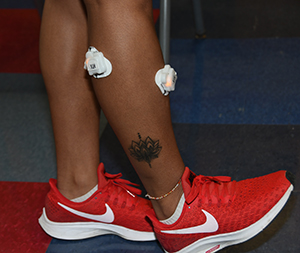
Kinesiology Research Yields Predictive Injury Capability
Kinesiology researchers at Delaware State University have discovered a way of determining whether a person possesses a high risk for ankle injuries, a novel innovation that could lead to better athletic personnel decision-making and improved corrective measures being prescribed.
Dr. Chris Mason, chair of the Department of Public and Allied Health Sciences within DSU’s College of Health and Behavioral Sciences, said a collaboration between a current DSU neuroscience Ph.D. candidate and faculty member and the DSU Chair was a perfect match due to shared backgrounds in kinesiology and neurophysiology and has led to the development of a new innovative analysis of the human body’s lower extremities.
The research has revealed that the amount of work encumbered by the ankle muscles to maintain the body’s equilibrium can give a strong indication of whether a high risk of ankle injury exists.
To see a DSU Inside Perspective interview with Dr. Mason on this new innovation, click on the below link:
The road to this neuromuscular revelation began with Dr. Von Homer and research he was doing at Barry University in Miami, Fla. Dr. Homer already had a terminal degree in orthotics and prosthetics and was a Barry faculty member, where he was leading research to gain a better understanding of how balance in the human body is controlled.
The combination of an interested footwear materials company in the research and Dr. Homer’s decision to enroll in Delaware State University’s Neuroscience Ph.D. Program led to the latest research findings in DSU’s Kinesiology Lab.
With some funding support from MatMarket LLC and Homer’s move to DSU, his research found a home in the Kinesiology Lab, which also served to accommodate his dissertation research.
Dr. Mason said Dr. Homer – who at DSU is working on his second terminal degree – approached his lab with the idea of looking more closely at “What does balance look like from a neurological perspective? How does neuromuscular control of the ankle work to ensure efficient postural control?”
The research at DSU expanded to investigate how orthotics influence balance and to find out how effective they are in preventing injury and providing additional ankle support.
Upon finding a correlation between the use of orthotics and the prevention of injury, the research then shifted to the question of what could be learned about the neuromuscular system that would indicate the mechanical cause of ankle injury.
Through the use of electromyography and postural control assessment, the Homer-inspired research efforts began analyzing the electrical activity of engaged ankle muscles, using more than 300 subjects that ranged from DSU athletes from a variety of sports, as well as professional athletes from the NBA, NFL and Major League Baseball.
In tests that analyzed the muscle contractions during the simulation of functional sports movement, the research revealed that the amount of electrical activity displayed in a particular muscle during acts of balancing gave an indication of the level of risk for sustaining an ankle injury.
The resulting innovation has been trademarked as the “Homer Technique” after Dr. Homer.
Dr. Mason said the results of the research put DSU ahead of the game in this area.
“There are labs that do EMG and balance testing in isolation, but we are on the cutting edge by putting multiple methods of assessment together to be able to answer questions not only related to what is your balance like, but also why is your balance the way it is, why do you activate certain muscles in a particular sequence during balance maintenance,” Dr. Mason said. “We can start to pinpoint those very minute and specific movement inefficiencies that other testing methods have not been able to touch yet.”
Dr. Homer said that this innovation could open up some new and potentially profitable possibilities for the University.
“With the capability of this Kinesiology Lab, we can work outright with shoe companies or create an app that could allow an individual to monitor his balance,” Dr. Homer said. “This could allow the University to benefit from the intellectual property.”
Possibilities are being explored through presentations of the research behind the Homer Technique to groups like the NFL at the March 1-4 NFL Scouting Combine. “We will be speaking to these groups of ankle and foot specialists to tell them about our new and innovative technique and to offer our services to the NFL and individual teams.”

